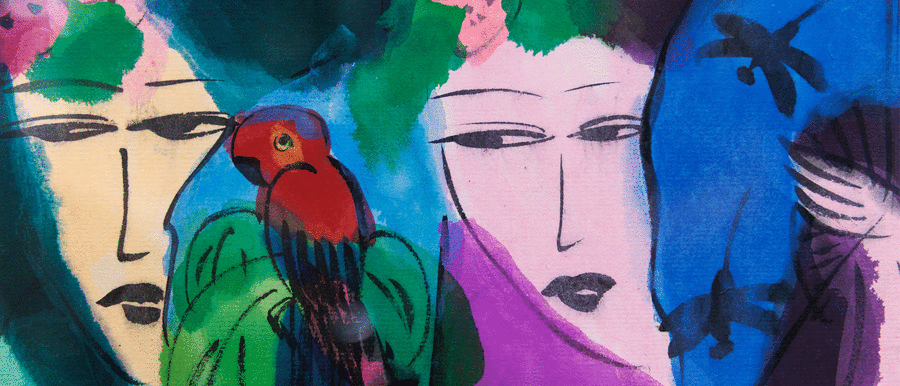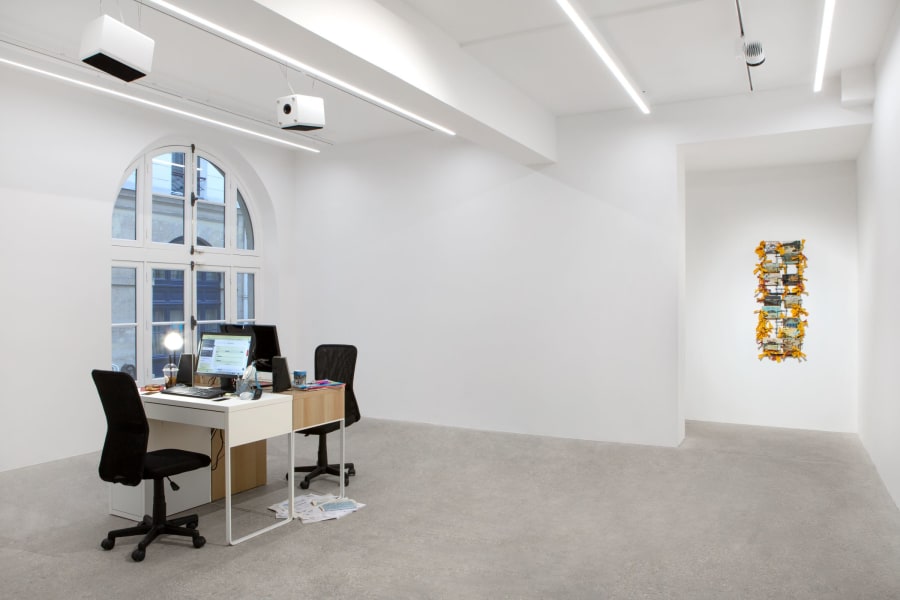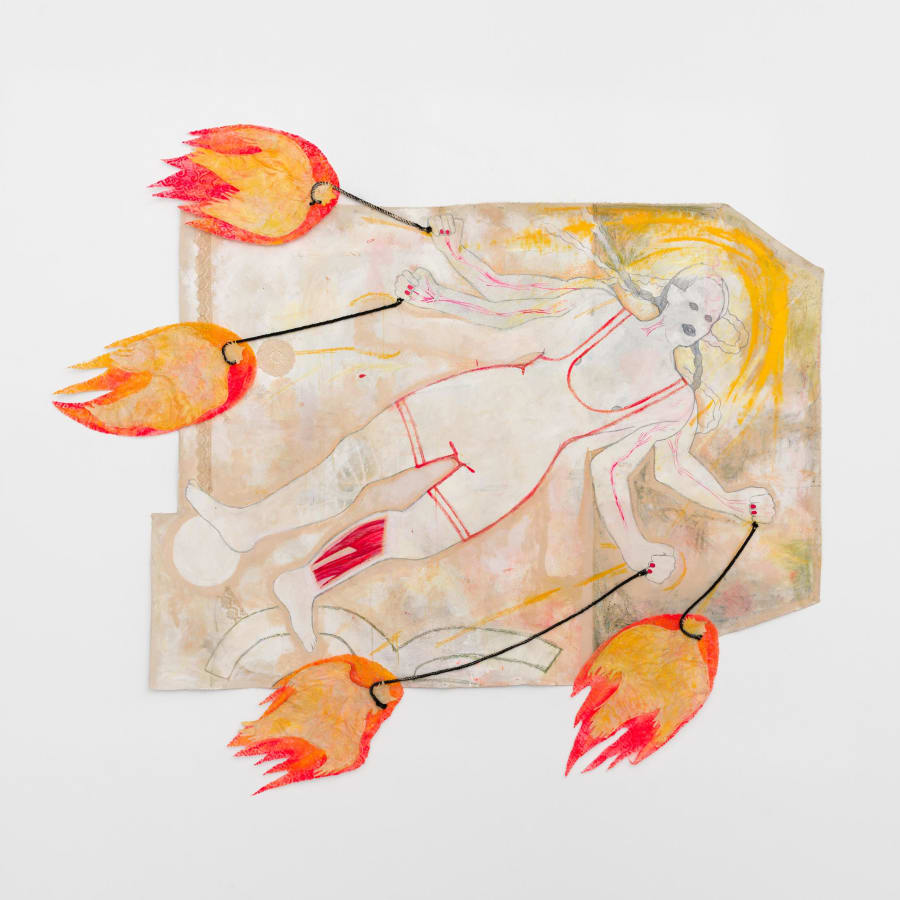In collaboration with Numéro art
Already established as a great writer since the 1970s, Annie Ernaux won the Nobel Prize for Literature in 2022 at the age of 82. Her novels scrutinize the French society of her time, and are often infused with her childhood memories and observations of daily life. These illuminating testimonies inspired the London-based curator and writer Lou Stoppard to explore resonances between the writer’s texts and photography.
During a month-long residency at the Maison Européenne de la Photographie (MEP) in Paris, the curator selected works by 29 photographers, including Daidō Moriyama, Ursula Schulz-Dornburg, and Luigi Ghirri, which are now unveiled in the exhibition ‘Extérieurs: Annie Ernaux & la Photographie’ (until May 26). The title of the exhibition comes from Ernaux’s famous novel Journal du dehors (1993) (published in English as Exteriors), which combines many themes echoed in the works on display. According to Stoppard these include ‘entering public space, and moving from interior to exterior; commuting; shopping, dining and other leisure pursuits.’
Stoppard has selected three photographs from the exhibition to consider in relation to topics addressed by the writer – exchanges on public transport, class relations, and motherhood with its occasional negative consequences for women. ‘When curating this exhibition, I focused not just on uniting Annie Ernaux’s texts with photography, but also tried to mimic the feel of a day out in a town,’ Stoppard explains.
Dolorès Marat, La Femme aux Gants
(Woman with gloves), 1987
‘Speaking of her celebrated image of a woman on an escalator Dolorès Marat has explained, “For this shot, the woman was going downstairs, while I was going upstairs. I had an appointment at the physio for my hand.” As with Ernaux’s writing, the photographer’s image is the result of her own lived experience: something she has encountered, not something engineered.
A theme running through Ernaux’s Journal du dehors is the significance of seemingly banal or everyday encounters. She often writes about how loaded haphazard meetings can be – the impact of the way a stranger carries themselves or an overheard snippet of conversation. The RER and Métro are frequent sites for her observations and the things she sees there have a profound effect on her. This work felt really fitting, since Marat has repeatedly turned to the French transport system, which she uses daily, to make images. Like Ernaux, she seeks to show things “as they are.”
“When I make a photo, I do it very quickly, when I have the emotion, most often while walking. I only make one, the first one is always the right one, it comes from the gut,” Marat said in an interview in 2015.’
Clarisse Hahn, Ombre (Shadow), 2021
‘In the introduction to Journal du dehors, Ernaux writes of how “the violence and shame inherent in society” can be interpreted from “the way we examine the contents of our shopping trolley or in the words we use to order a cut of beef… in anything that appears to be unimportant and meaningless simply because it is familiar or ordinary.”
Like Ernaux, photographer Clarisse Hahn has a keen eye for both overt and subtle responses to societal expectations, particularly those connected to gender. Both note the way public space, particularly sites of commerce and competition – where power and money are exchanged – provide both a stage and a trigger for the performance of identity, offering the simultaneous challenge and comradery of an audience.
To me, this image also connects with Ernaux’s interest in food shops and supermarkets, and her comments on how much can be gleaned about aspiration and class from the way people make orders or speak to staff.’
Janine Niepce, HLM à Vitry. Une mère et son enfant (Social housing in Vitry. A mother and her child), 1965
‘When I presented my research to Annie Ernaux, she was particularly taken with the work of Janine Niepce. And there are various intriguing synergies between the two of them, especially in terms of the many themes that unite their work. Both have tracked the modernization of French culture, with various key shifts playing a central role in their work, from the introduction of new technologies such as television to the growth of rapid transport. And both have a particular interest in capturing the contrast between life in rural and urban communities, and the significant distance, both real and imagined, that exists between many of these places and the capital, Paris. A key theme in Journal du dehors is the sense of separation that exists between Cergy-Pontoise [where Ernaux lives] and Paris.
Niepce’s image of a mother and child nods to the various ways Ernaux has addressed the complexities and confinements of motherhood throughout her work. On viewing the image, Ernaux was struck by the different gazes – the child looks at the mother, but the mother looks out at the world. It speaks to the restrictions and limitations, in terms of routine and freedom, that can prevent us from being able to observe and engage with the world.
Ernaux’s response to this image made me realize that, in some ways, Journal du dehors is a testament to liberation – divorced, and free from the pressures of young children, Ernaux is free to engage deeply with what she sees, to move and be moved, to see and react, and be present in the world.’
This article is part of an ongoing editorial collaboration with Numéro art. Read the original article here.
‘Extérieurs - Annie Ernaux & la Photographie’
Until May 26, 2024
Maison Européenne de la Photographie, Paris 4
Matthieu Jacquet is a journalist and art critic based in Paris. He writes about art and fashion for Numéro and Numéro art.
English translation: Emma Naroumbo Armaing for Numéro art.
Credits of the top image: Janine Niepce, H.L.M. à Vitry. Une mère et son enfant (Council estate in Vitry. A mother and her child), 1965. MEP Collection, Paris. Acquired in 1983. © Janine Niepce / Roger Viollet
Published on March 22, 2024.


